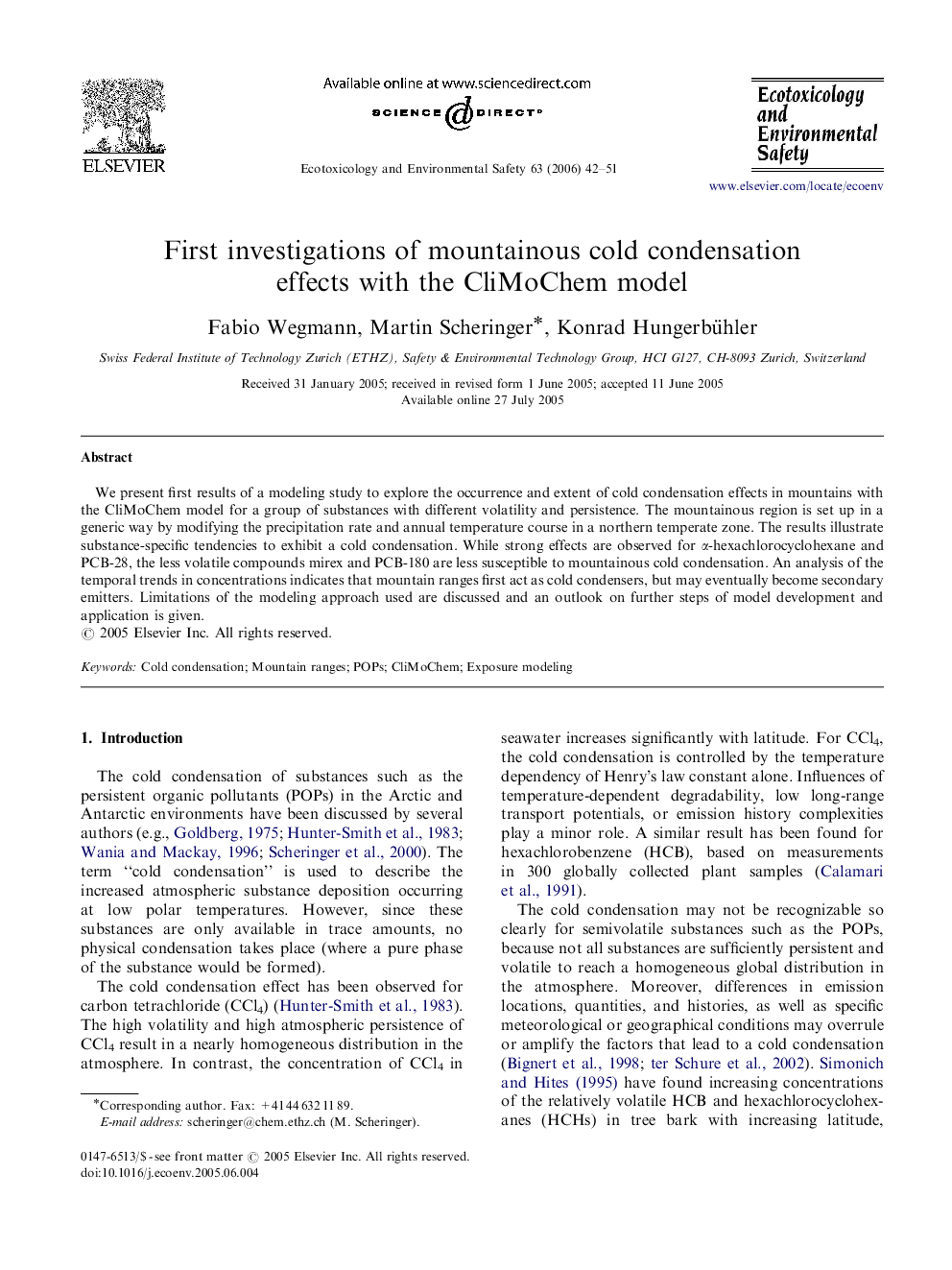| Article ID | Journal | Published Year | Pages | File Type |
|---|---|---|---|---|
| 4422435 | Ecotoxicology and Environmental Safety | 2006 | 10 Pages |
We present first results of a modeling study to explore the occurrence and extent of cold condensation effects in mountains with the CliMoChem model for a group of substances with different volatility and persistence. The mountainous region is set up in a generic way by modifying the precipitation rate and annual temperature course in a northern temperate zone. The results illustrate substance-specific tendencies to exhibit a cold condensation. While strong effects are observed for α-hexachlorocyclohexane and PCB-28, the less volatile compounds mirex and PCB-180 are less susceptible to mountainous cold condensation. An analysis of the temporal trends in concentrations indicates that mountain ranges first act as cold condensers, but may eventually become secondary emitters. Limitations of the modeling approach used are discussed and an outlook on further steps of model development and application is given.
